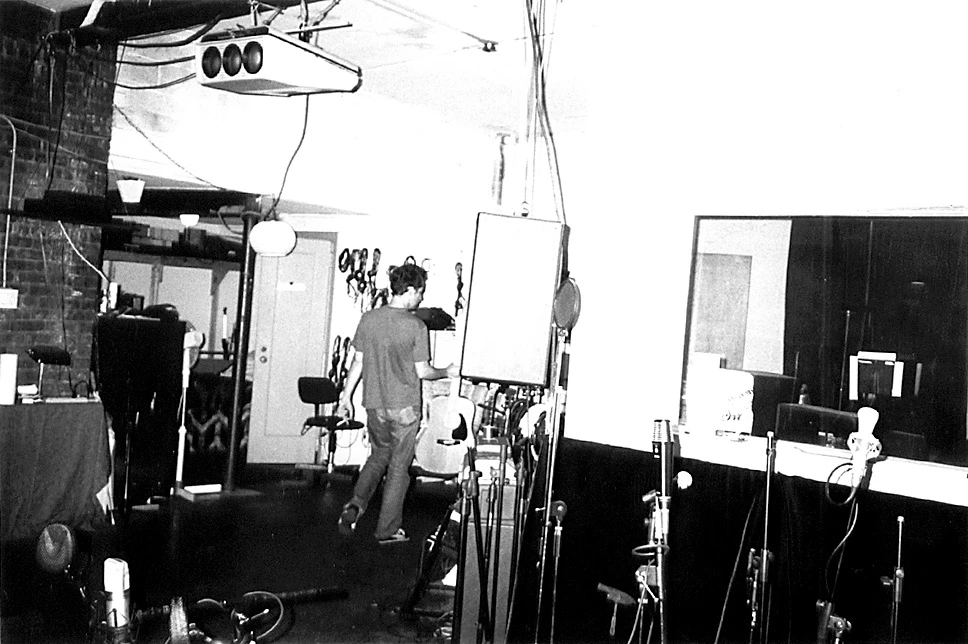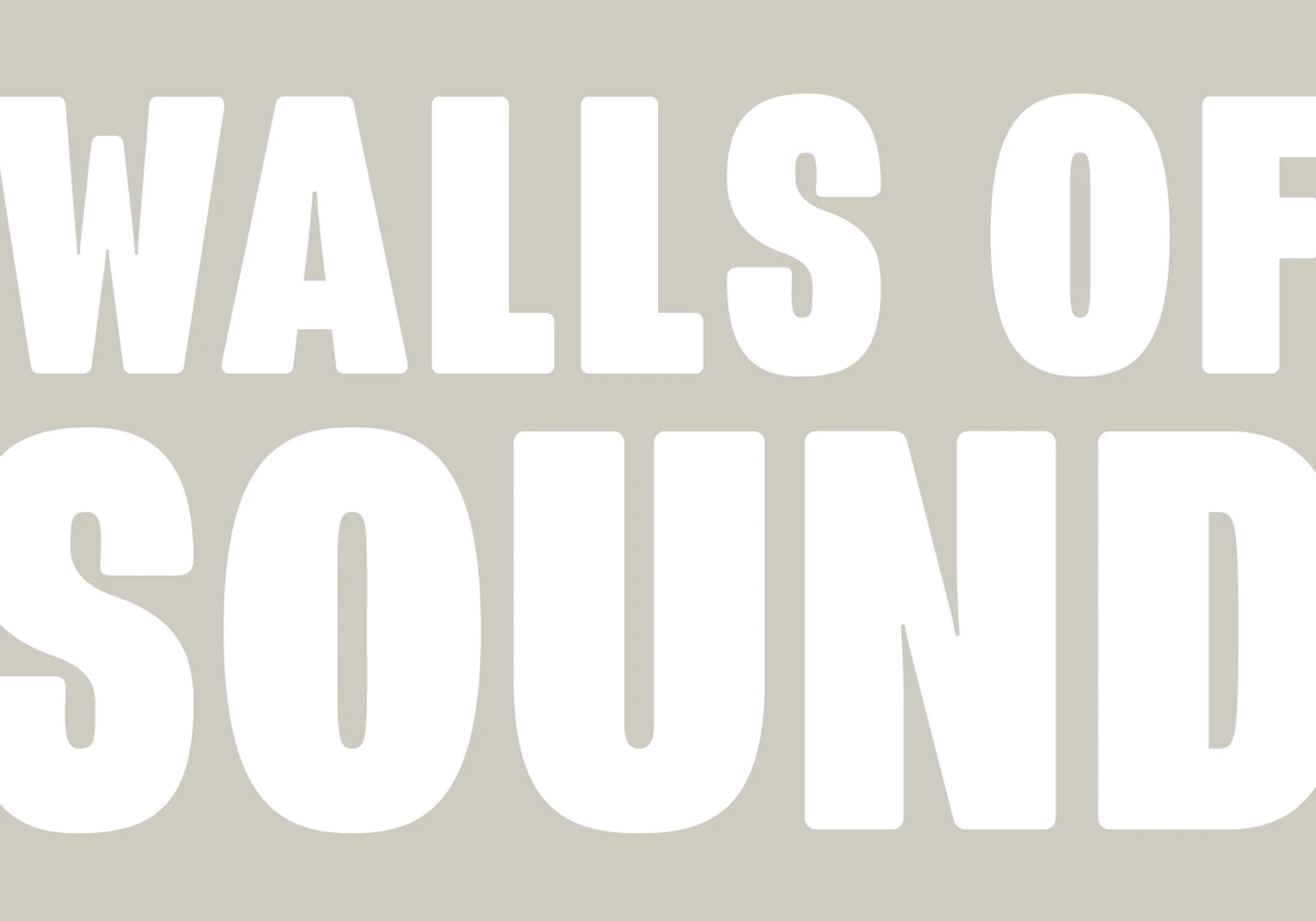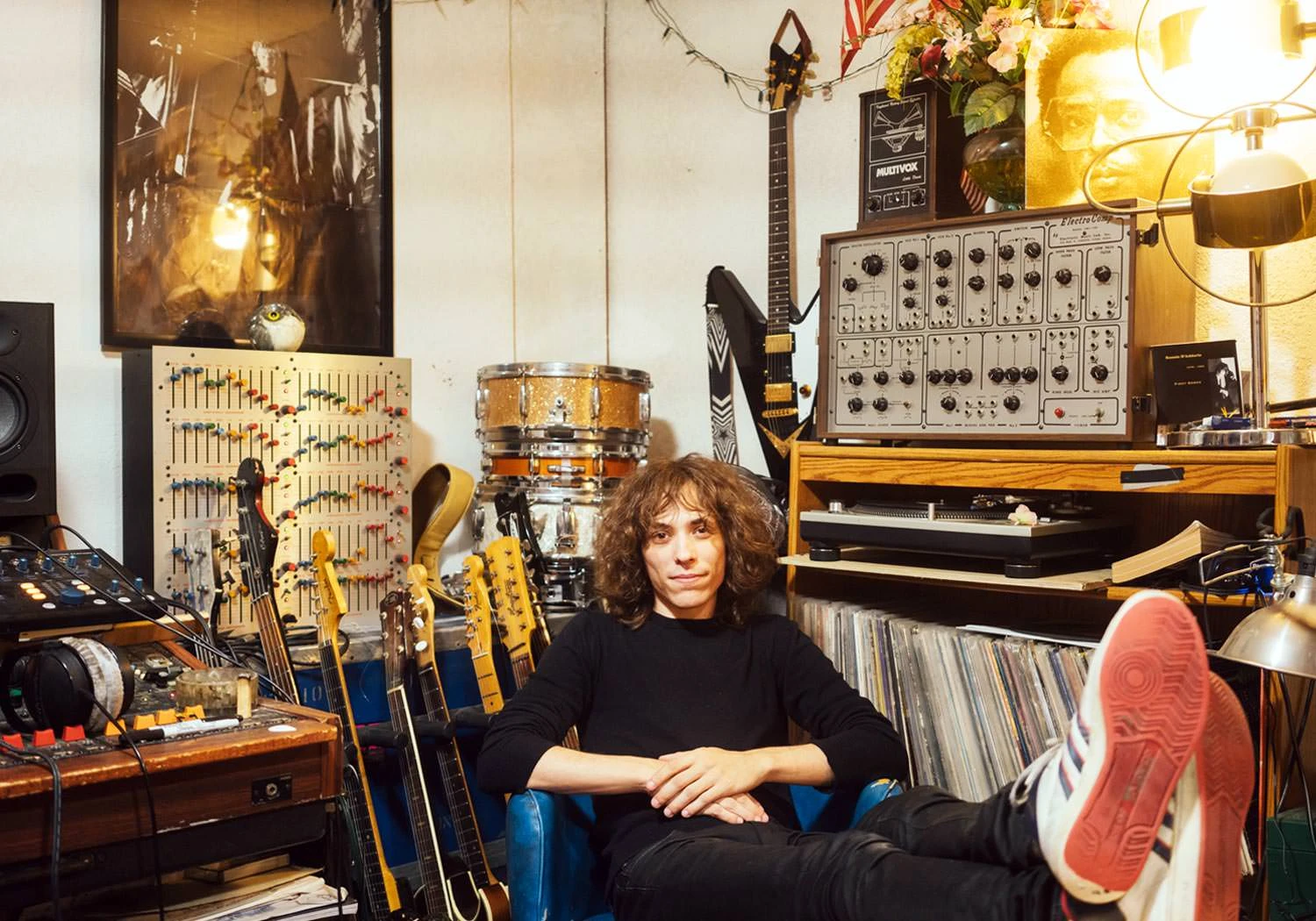
[ image rare2 type=center ] Brooklyn, New York, has become a hot studio spot during the last few years. Free from the space crunch of Manhattan, rents are lower and smaller studios can survive. Nicolas Vernhes runs Rare Book Room (named after an EP by a band he had been in) out of a nondescript building there and has made some amazing records with bands like Versus, Silver Jews and many more. There's a real attention to the detail of sounds in his work that's exciting to listen to and there's also a "timelessness" that will help his recordings survive the test of time. All are good qualities in my book.
Your studio is kind of similar to mine, we do a lot of indie-rock type stuff. I kept seeing your name on the Versus records and the Silver Jews' record.
Deep Red. It was recorded the same time as their other full release, Secret Swingers, on Caroline.
Why?
For fun. It was 38 hours non-stop. We just kept going until it was done and it got really edgy in the room.
The first 2" 16 tracks that came out, like Ampex, were basically video tape machines that were converted to audio recorders.
That's funny, the same thing happened to ADAT.
That's true! [laughter]
Last week, Tara Jane O'Neil [ex-Rodan] came in to mix her solo record. She had done it on a couple of ADAT 20-bit XTs. She did a nice job.
My studio's exactly the same way, the door bleeds but the window never bleeds.
If I sit in the middle of the room the sound is totally coming from the door. The door is far though, I hear it come through but not enough.
Let's go into the control room and talk about some of the toys. You were talking about what you mix down to and how much difference that makes to what your working on.
Recording and mix down are amazingly different to me. I've recorded on the computer quite a bit lately and it doesn't really do to the sounds I'm recording what a 24-track will do. If I do another all computer project I'll probably just record the basic tracks on 24. I think it makes a really big difference.
I just got a 1/4" deck and I have to learn how to do it and I'm terrified. I want to learn it before I have to do it.
You can just goof around, just record some music and start cutting in other pieces.
You made sure to get the sound you wanted before going into the computer.
Well, you know that, with digital, you sort of have to get the sound before. It's too transparent, which could be good thing because you can totally use it. You can get that weird sound you want and pretty much just record that. Come back with that same high and low end that you had when you were tracking. On a 24-track if your hitting the tape harder and harder the spread of harmonics changes dramatically. I recorded some acoustic guitar yesterday, finger picking on a classical. I had the tape, so it was saturating just the low end and that was giving me mid and high harmonics, which went with the song. I could've never done that on the computer. I wasn't hitting any pre-amps hard, if I had it wouldn't have been the same result anyway. It would've distorted a different way than the tape. And it doesn't crackle, if your machine is running really well, the distortion won't crackle.
It takes a lot.
There is a lot of headroom. It's also the electronics in the machine. For example, the Studer 1/2" won't have as much headroom and you'll hear distortion on the cards. That's not the same thing as tape distortion, it's very different. The op amps on this machine have different thresholds I guess. Whereas on the 3M 79 they're really, really solid. It's very forgiving. I think if you record live or improv... to have a machine that can basically go with you like a microphone or a pre-amp can. You won't fuck up the take.
Yeah, I'll look over at my machine and see the needle and the bass is just flat out stuck.
That's also because they're calibrated to monitor 1K, the high end won't register on the needles. They're average, not peak. So, if the high hat's not even moving you'll still have it pretty loud.
I notice that with shakers or tambourine...
Well, because it doesn't even hear it, it's listening to 1K.
The transients are insane, you look at your LED meters and they're going really high, but over here it's just... it's barely moving.
For cymbals.
Yeah, 'cause if you saturate them it also changes the sound of them.
Cymbals and snares I don't usually like to saturate unless I'm specifically going for something.
I've done records where you just smash the snare with a little bit of crunch...
Yeah it depends, it can be frustrating and it can get kind of rubbery too. Sometimes you lose the attack by your compressor. It catches it so quickly, it totally sucks out the front end of the sound wave. In a weird way, that would actually make it for a less aggressive record.
You've got some good toys going here.
Yeah, that's my recording rack and my effects rack, basically.
I know on the overheads you can pull some stuff off with this.
It's got more mid-range and it accentuates the highs a little longer. I tend to record flat and dry and I tend to mix that way. I don't really go for effects as a default setting to make something work.
You try to shut it off.
Yeah, and that can only help you because you should have control over the engineering and not really worry about the music, but they're linked hand in hand.
The sound of something is very relative to how it's perceived.
There's a record that I like by The Fall which sounds crazy. A friend of mine let me hear it. It's called Slates, it's an EP that's really, really amazing.
I don't know why people do that.
On certain material it lends an effect. I guess I don't really record that kind of material that often. I've tried it with the Manley — we put everything through it just a little bit. There wasn't that much compression on the recording itself so it was a way to kind congeal everything. It's easy to go too far with that and it's almost impossible to recoup. The plug-ins for Cubase has this... the threshold, instead of going down you go up, it'll boost the loud sections of the song. It's very smooth, you can set it for a dB or two if you feel like there has been a mistake mixing or something I haven't tried that yet.
That's interesting. If you take something that's been done on a 4- track or with a real limited dynamic recording gear in the first place and then to add that in during the mastering process to try and open it up a little it might be helpful.
I've been curious about mastering. The first record I did came back from mastering totally fucked up. It wasn't a hi-fi thing to begin with, but instead of leaving it alone and trying to humor us, they decided to brighten it up and they removed some low end, which they thought was probably in the interest of the music. It turns out it was losing a lot of the low end stuff that we were doing, which was really bad. We did really cool stuff with the distorted bass and I guess they thought it wasn't going to please people... I don't know. It was too late, it was a small label and they pressed like 500... forget it. After that I attended just about every mastering session of anything I worked on.
I never have.
I never have either.
Mostly I think it's because the clients have been under strict budgets. I felt like they're already paying to get it mastered. I never charge. It's just a day off but it's still work. The other thing is if I have no budget I'll just do the mastering here.
This looks almost like my studio. I noticed on the Realistic speakers [Minimus 7s] that I wasn't hearing the bass guitar coming through on them.
It's bad because you should really be able to hear it. It shouldn't have the punch like it does on regular speakers, but if it's losing itself entirely then there's a problem. Usually, it's the guitar. When you've got two or three layers of guitar chords, it takes up an enormous amount of room. I'd rather record one take with all the right sounds than to create texture, by layering, as a remedy. If the part is well worked out and well played, I don't think there should be a need for overdubs. Unless you want to do doubles. People do exact doubles and pan them, that makes more sense to me than a lot of layering on the thick chords.
I like layering when it's for specific things, like My Bloody Valentine [Tape Op #26] or Cocteau Twins... going for the depth thing with crazy layers.
In that case, they are the bass mixes where the bass is just more like an extension of the guitar sometimes. It just makes up a big string instrument, with a cool, solid low-end. I did that once for a recording where I split the guitar through two amps. One amp I made it sound like a guitar as much as possible, with a nice even representation of what the guitarist was playing. Then I split the signal and went to the B15 (Ampeg) and sort of drove it pretty hard and cut all the high-end off, and mixed the two signals. It was great, he would go to a low note and the bass sounded amazing. He was detuned below D, it was really deep. The guitar amp wouldn't have really shown that effect the way a 15" speaker with a really good tube amp might do.
It's good to put yourself on the other side of the glass occasionally. To try and accomplish something,and getting frustrated in your own studio, you realize how...
Imagine somebody who doesn't know how this stuff works, they don't know. You don't know either, you don't know what's going to happen when you move the mic over... If you want that open A string to ring well, that's going to take moving around, mostly on an acoustic instrument.
Putting an acoustic guitar on a rock band track is one of the hardest things in the world.
It is; a great example is recording the acoustic guitar for David Bowie's Ziggy Stardust, it has an incredible guitar sound and when the band comes in it's still incredibly solid and defined.
[object Object]
[object Object]
[object Object]
[object Object]
[object Object]
[object Object]
[object Object]
[object Object]
[object Object]
[object Object]
[object Object]
[object Object]
[object Object]
[object Object]
[object Object]
[object Object]
[object Object]
[object Object]
[object Object]
[object Object]
[object Object]
[object Object]
[object Object]
[object Object]
[object Object]
[object Object]
[object Object]
[object Object]
[object Object]
[object Object]
[object Object]
[object Object]
[object Object]
[object Object]
[object Object]
[object Object]
[object Object]
[object Object]
[object Object]
[object Object]
[object Object]
[object Object]
[object Object]
[object Object]
[object Object]
[object Object]
[object Object]
[object Object]
[object Object]
[object Object]
[object Object]
[object Object]
[object Object]
[object Object]
[object Object]
[object Object]
[object Object]
[object Object]
[object Object]





